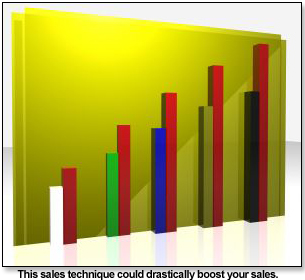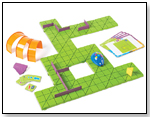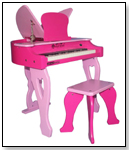|
|
This Advanced Retail Selling Technique Could Save Your Store One of the most basic elements of any retail sales training program is covering product features and benefits. The feature is a fact you can’t dispute; the benefit is what the customer gets from that fact.  But many times what customers are told on the sales floor is just a list of features. It's boring. And overwhelming. And it frequently trips a customer’s idiot switch. Customers wonder, "Why are they telling me all of this?" while a salesperson is vomiting useless fact after useless fact. An untrained employee uses them like a hunter uses a shotgun to shoot into the air, hoping a bullet strikes a bird. But if you truly understand how to sell something in a retail setting, you know the magic only happens when you give the right features to the shopper based on what that shopper told you was important to them. To really ace a full-price, premium item sale and to sell it without a discount, you have to be able to compare and contrast various products in a natural way. I ran across this article, How Expensive Shotgun Shells Save You Money, written by Bill Miller, a hunter, and the writer does a brilliant job of pointing out the benefits of spending more on better ammo. He’s not a salesman, he’s a user. He shares his wisdom in practical, real world examples like: "Think about the birds you’ve lost while shooting 'bargain' shells. Every one of us has shot a duck or goose with standard steel, seen it flinch from the hit, but then watched it go on flying as though totally unaffected. Finally, a quarter-mile away, it folds up and drops like a stone in the middle of the thickest cattail slough in the state. Even a world-champion retriever brings back few of those birds. It happens more than we like to remember. Or on his final advice when he tells us: "Go to your local sporting goods store. You’ll see that Federal Black Cloud three-inch Steel #3 costs almost exactly twice as much as the least expensive steel three-inchers in Federal’s line (or anybody else’s, for that matter). Since the Black Cloud shell significantly boosts your odds of stoning a duck with a single shot versus having to shoot even one more shell to finish each duck you shoot, then you’re immediately breaking even with the Black Clouds."As a potential customer, you read it thinking, "I didn’t know that," or, "I’ve never looked at it that way." And as that customer, you know you will purchase the better, more accurate, more expensive ammo next time - you've been shown that it will give you a better experience. The benefits make it worth the cost to you, the customer. Those benefits put a face to that product so it stands out from other like products - especially those that are cheaper. It is the power of compare and contrast when selling. Once your crew is able to isolate the features of your premium products and connect them to the benefits for each customer, it’s time to train those employees on the more advanced retail sales technique of compare and contrast. Don’t do it before they can reliably describe the features with benefits, or they will get frustrated and so will you. Then become a story collector To get started, have your salespeople, as they are ringing up each of their customers who are making a full-price purchase, "Why did you choose this premium item?" (Don’t ask about the brand like, "Why did you choose Jimmy Choos or Rolex? Ask why did you choose this premium item?) You are looking for the benefits these customers find in these expensive items that make them willing to spend more money. You will probably hear them talk about a feature that they see as a solution to save them time, trouble, or in the case of the hunter - lost birds. Or you could hear about impressing their friends, family or stubborn in-law. The more your employees ask for and then hear these stories, the more they’ll understand what benefits are most important to their customers. That gives them the foundation to compare and contrast with future customers. Next they have to understand that comparing two items begins with the similarities. Select one premium item and something wildly cheaper. For example, if you are a jewelry store, choose a wedding band and a paper ring. If you are a pool store, choose you best above ground pool and a hole in the lawn. If you are a window fashions store, choose your premium window covering and a roll of foil. Got the idea? What you want them to be able to see first is how both items are the same. This exercise helps them imagine and play, which is the best way to learn. You’re building their insight between words they commonly use and products they may not sell very often. Have fun with it. So for the wedding band and paper ring, they should be able to say how both could be given as symbols of affection, how both are handmade, how both can be sized to an individual. For the best above-ground pool and a big, deep hole in the lawn, they should be able to say how both hold water, both will make you cooler when you jump in, and both take up the same amount of space. For the premium window covering and a roll of foil, they should be able to say how both can keep out the sun, both roll up, both are easily installed. Once they can do that, you’ll want them to contrast the two items. So for the wedding band and paper ring, they should be able to say how you can’t wash your hands while wearing a paper ring as it will dissolve, the band of gold will last longer, the less expensive the material may mean the more temporary the relationship. You get the idea. Once they can do this easily with most anything you give them, choose two of your own products or one of yours and one of a competitors. Suggest that they go online to research the differences. Don’t let them report back a set of features ‘cause that’s about all you’ll find. (See my search results for which is better merino wool or cashmere here.) Customers care about features to a point, but they care so much more about benefits - especially the benefits to them. What does that feature allow this customer to do, save or avoid? That’s all that matters to them. That’s what you can add to each sales experience in your retail store that an online search cannot - your wisdom for the customer to make the choice between two items easy. It only happens when retail selling techniques are trained. In Sum Until your salespeople can make comparisons between wildly different products, they probably won’t be able to make subtle comparisons between two premium products. That means they’ll default to "this one is cheaper" or "this is on sale." And that’s not compelling because there’s always someone cheaper...always.  Writer's Bio: Bob Phibbs is the Retail Doctor®, a best-selling author and speaker who has helped thousands of independent businesses compete. His new book, The Retail Doctor’s Guide to Growing Your Business has received praise from both Inc. magazine and USA Today and can be found at your local bookstore or ordered at http://www.retaildoc.com/guide. He and his work have been featured in the New York Times, the Wall Street Journal and Entrepreneur magazine. Questions? Contact Bob at info@retaildoc.com. This article was reprinted with permission of the author, Bob Phibbs, aka The Retail Doctor®. Read more articles by this author Writer's Bio: Bob Phibbs is the Retail Doctor®, a best-selling author and speaker who has helped thousands of independent businesses compete. His new book, The Retail Doctor’s Guide to Growing Your Business has received praise from both Inc. magazine and USA Today and can be found at your local bookstore or ordered at http://www.retaildoc.com/guide. He and his work have been featured in the New York Times, the Wall Street Journal and Entrepreneur magazine. Questions? Contact Bob at info@retaildoc.com. This article was reprinted with permission of the author, Bob Phibbs, aka The Retail Doctor®. Read more articles by this author |
| ||||||||||||||||||||||||||||||||
Disclaimer Privacy Policy Career Opportunities
Use of this site constitutes acceptance of our Terms of Use.
© Copyright 2025 PlayZak®, a division of ToyDirectory.com®, Inc.



